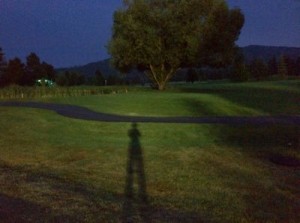Managing Your Energy, Part 35: Catching & Cultivating Spiritual Energy

We lay groundwork for energy mastery and spiritual states through ‘hands-on’ practice, developing focus, intention, and receptive awareness. Exposure to people who are spiritually advanced, however, is the most direct way to cultivate spiritual energy.
At the in-depth meditation and spiritual dance retreat I attended in January, I had the inestimable opportunity to sit right close to my Teacher throughout the meditations.
On the fifth day I became keenly aware of the energy coming into his crown chakra, connecting him with his own teachers and their teachers, informing his energy and guidance. In this group, direct connection is encouraged, with all illuminated Beings and with one’s Teachers.
While I have known about this energy link for years, I had acted as if carrying it myself was an ideal or an abstraction. I liked the idea and feel of it, but didn’t have a solid grasp of just how to tap in to that myself. Nor did I exert concentrated or ongoing efforts in that direction. I considered being established in that energy something to grow into eventually. This horizon continued to recede without my becoming any younger. So I set about to realize the link to a greater extent.
Sitting beside my Teacher being actively curious about that link was somewhat unsettling. The boundaries seemed complex. I opened to him to totally attune to his energy, directing my attention to feel the energy above his head. It did not feel right to seek to enter that stream of energy directly. I wanted to avoid being invasive or distracting. I wanted to learn to run that energy myself; to connect with the same sources. I noticed my Teacher feel me as I touched his energy with my mind. A stab of concern ran through me. I relaxed a small part of me that wanted to take or to have, knowing that attachment would destroy what I was looking to create. My intentions were respectful and this pursuit was honorable.
Several minutes later we circled up for the next practice session. My Teacher said to the group, “As they say, these states can’t be taught— they must be caught.” While I was reeling, realizing that we was addressing what I had just done, he said else something to the effect that those who are open to it and ready for it ‘catch’ the transmission of energy.
“In the Krishna story,” he concluded, “this is referred to as ‘stealing butter.’ Baby Krishna had a tendency to steal butter.”
This term should not be interpreted to construe that stealing energy is okay. My Qi Gong teacher used to suggest copying it. Instead of trying to use him as a source or to steal the energy he was running, he suggested using ‘copy and paste’ and learning to match it.
Trying to learn by listening to words alone can generate assumptions about what an unknown experience might be like. Preconceptions interfere with actually experiencing. We may miss an important experience altogether, seeking things that match our concepts.
Other than happening upon them by grace or chance, we gain access to spiritual states by seeing, feeling, sensing, and intuiting them as they are modeled by someone who has established them within their energy systems.
We grow quickly by learning to carry our energy the way advanced teachers do when they practice, by learning to match their vibration.
Spiritual and martial arts traditions often have a lineage or a line of teachers going back through time, through which aspirants can connect with the energy of those who have mastered advanced states. We can attune to the energy of developed Beings by exposing ourselves to their lives and hearts through concentration and study. Person-to-person contact is more direct.
Have you ever tried to intentionally reproduce a certain kind of energy?
What happened?
What are the implications of being able to intentionally generate or connect with positive energy?



















